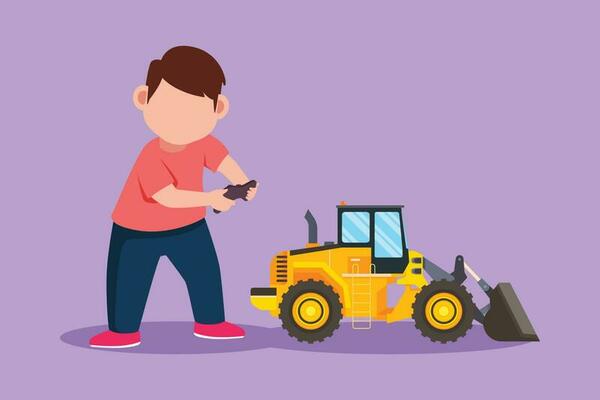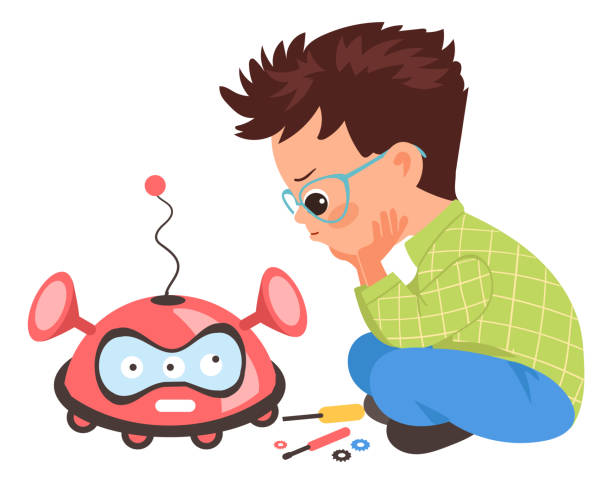
Cars and Trucks: Remote-controlled vehicles ranging from simple cars to complex off-road trucks with varying speeds and capabilities.
Drones and Quadcopters: Flying devices controlled via remote, offering aerial maneuvers and photography capabilities (e.g., DJI drones, Parrot quadcopters).
Boats and Submarines: Watercrafts controlled remotely for navigating ponds, lakes, and pools.
Robots: Programmable robots that perform tasks or provide entertainment through remote commands (e.g., humanoid robots, robot pets).
2. Benefits and Developmental Impact
Hand-Eye Coordination: Improving motor skills and coordination through precise control of vehicles or devices.
Spatial Awareness: Enhancing understanding of spatial relationships and navigation skills.
Problem-Solving: Encouraging problem-solving abilities by navigating obstacles or challenges.
STEM Education: Introducing concepts in engineering, physics, and technology through hands-on play.
3. Design and Features
Control Mechanisms: Different types of remote controls including traditional radio frequencies (RF) and newer technologies like Bluetooth and smartphone apps.
Durability: Sturdy construction to withstand crashes and outdoor conditions for vehicles and drones.
Battery Life: Optimizing battery usage for longer play sessions and quick recharge times.
4. Making and Manufacturing
Prototyping: Developing prototypes to test functionality, durability, and user interface.
Materials: Selecting lightweight yet durable materials such as ABS plastic for vehicles and corrosion-resistant materials for watercraft.
Assembly: Precision assembly of electronic components, motors, and chassis to ensure reliability and performance.
5. Care and Maintenance
Battery Management: Monitoring battery levels and ensuring proper charging to maintain optimal performance.
Cleaning: Regular maintenance to remove dirt, debris, and water from vehicles or drones after use.
Storage: Storing remote-controlled toys in a cool, dry place to prevent damage from moisture or extreme temperatures.
6. Good and Bad Sides
Good Side:
Entertainment: Providing hours of fun and excitement for both children and adults.
Educational Value: Introducing STEM concepts through practical application and experimentation.
Skill Development: Improving coordination, problem-solving, and strategic thinking skills.
Bad Side:
Safety Concerns: Risks associated with collisions or crashes, especially with flying drones or high-speed vehicles.
Cost: Higher cost for advanced models with additional features and technology.
Environmental Impact: Potential environmental impact from battery disposal and plastic waste.
7. Market Trends and Consumer Preferences
Technology Integration: Increasing demand for smart features like FPV (First Person View) cameras, GPS navigation, and app-controlled functions.
Age Appropriateness: Offering products tailored to different age groups and skill levels, from beginner to advanced hobbyists.
Customization: Personalizing vehicles with interchangeable parts, decals, and accessories.
Safety and Regulation: Compliance with local regulations regarding drone flight and safety guidelines for remote-controlled vehicles.
8. Customer Preferences
Quality and Durability: Prioritizing well-built, durable toys that withstand frequent use and outdoor conditions.
Educational Value: Valuing toys that combine entertainment with learning opportunities in STEM fields.
Ease of Use: Preferring intuitive controls and straightforward setup for immediate enjoyment.
Brand Reputation: Choosing reputable brands known for innovation, quality, and customer support.
Conclusion
Remote-controlled toys continue to captivate enthusiasts of all ages with their blend of technology, skill development, and sheer enjoyment. Whether soaring through the skies with drones or racing across terrain with cars, these toys offer dynamic experiences that inspire creativity, learning, and outdoor exploration. As technology evolves and consumer demands shift towards more interactive and educational play options, remote-controlled toys remain at the forefront of innovation and entertainment in the toy industry.


